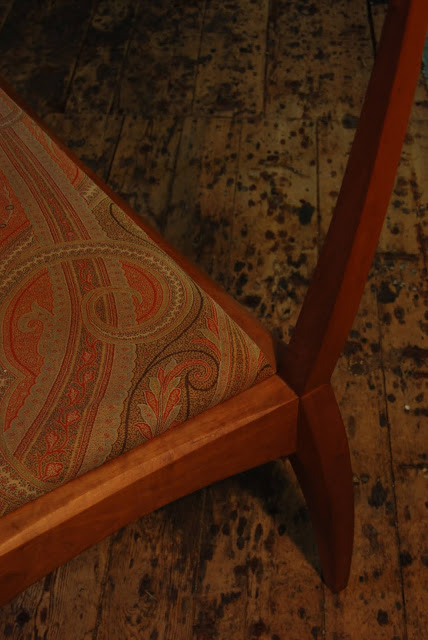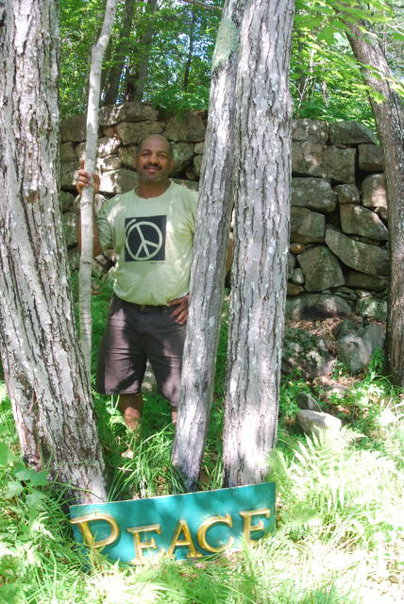Following The Grain
The earliest years I remember, bring back memories of evergreen and mixed hardwood forests, and the nearby lakes and streams of rural Cranberry Lake, New Jersey. My family lived on Tamarac Road, which wound its way through that portion of the lakes region of NJ. My father often took my brother and I fishing at the edge of those lakes, which were surrounded with railroad trestles and expansively planted forests of tall pine, no doubt a product of the Works Progress initiative. At the base of those trees and the edges of those lakes, my memories began to form like ripples flowing outward from a fishing bobber and the growth rings of trees, which back then, I could not see. Perhaps those are appropriate metaphors for what becomes internalized and indelibly ingrained, what we may forget along life’s journey, and what impact we may have on the world around us that is beyond our immediate comprehension. The indelible includes, my eyes discovering salamanders and the making of things with my hands, receiving and giving. Those two things represent the natural reciprocity of our human existence with the planet that begins to be intuitively reinforced in any child with access to nature as a playground. They also are central tenants of craftsmanship.
With the journey of age, intellect and experience can either reinforce or undermine this essential native intuition, the joy in simplicity, and significantly, our relationship with the planet. It was partly a longing for simplicity that, years ago, made me reassess my path in architecture, when I realized that I needed to incorporate the love and fulfillment of working with my hands. I would wind up studying and creating independently before pursuing a masters degree in furniture design at Rhode Island School of Design. What accompanied this transformation, was also a desire to use my acquired skills for a higher purpose. At the time, that purpose was family, and resulted in building my first furniture and a barn, as part of a rural family vacation place in NY State.

On this journey, I was also accompanied and inspired by a group of woodworkers over the years, to ‘follow the grain'. They dot a journey that included a heavy dose of the bucolic, along rural roads, where I observed American vernacular. The journey took me into antique shops where I accessed primitive furniture, objects seemingly lost in time, and met timeless and quirky personalities in shop keepers and artists who became my friends. I also read voraciously and visited a number of the people and places where woodworking formed a central component of life and an outlook on living close to nature. I assure you, as I meander herein, I have a purpose.
Of the woodworkers who inspired and educated me, there were both ‘in-lookers’ and ‘out-lookers’. Those dedicated to a near hermit lifestyle of studio craft as they explored the fascinating intricacies and properties and potential of their materials, were the in-lookers. James Krenov was notable among this group. I remember musing about his book ‘Cabinetmakers Notebook’ on a drive on the Western bank of the Delaware. While his outlook may have seemed inward, the discoveries he made really have to be defined in the larger context of the relationship between physics and naturally occurring forms including magical variations and qualities imbued to wood during both the growth and harvesting process. Additionally, each of those includes environmental factors, thus ultimately reconnecting inward and outward perspectives.
Is it really possible to reflect inward, without an outward perspective? Probably not, as the life of an older husband and wife team of woodworkers I visited in rural NJ, near Bedminster, attested to many years ago. They had built a homestead and were living in more harmony with their natural surroundings than most. As the years go by, awareness of the impact of our individual lifestyles have on our shared planet become more acute. We need to pay attention to the grain and the ripples more than ever to guide us through the grand story of planet earth. I remember the husband’s pride in his ability to get cabinetmaker quality cuts in wood with a sawzall and his proud acquisition of a slab of bubinga wood that was at least 3 feet wide and 14 feet long. That wood was waiting to tell another grand story, just in the form of furniture.
‘Out-lookers’ included Gustav Stickley, who had created ‘Craftsman Farms, in Morris County NJ, near the end of his career. The farm was his expression of the inward look of the traditional craftsman reaching back to the writings of the Arts and Crafts Englishman, William Morris. It was also the expression of reaching outward and forward into the possibilities of the industrial revolution in America and how those qualities I saw in that husband and wife crafting team might find their way back into the larger society. I would return to Stickley's farm to lecture on the influence of the earlier Arts and Crafts movement on contemporary furniture makers, some of whom I would end up studying with in later years.
I have also returned several time to the place of my earliest years with a renewed set of eyes. On one of these occasions, I found a barn full of hardwood in a nearby village shop and purchased some very interesting slabs including some curly butternut, and spalted maple. For those not steeped in ‘wood-speak’, ‘curly’ refers to a wave pattern of grain mimics waves and the reflectivity on the surface of water, while ‘spalted’ refers to the formation of bacteria colonies that oxidize wood from the inside, creating dark lines and streaks. Both qualities are prized by woodworkers and both sets of wood slabs from that excursion also had ‘live’(natural) edges. The spalted Maple piece, in particular has a story to tell. The slabs were once a sugar maple tree. The tree was tapped for syrup before being taken down by a lightning storm. It laid in a farmers field, where wood boring bees made a home in it. The rain and elements found their way into the holes left by both the sugar tapping and the bee boring to create concentric black lines in the wood that resemble a topographic map drawn with pen and ink. This wood awaits to tell a story in furniture reflective of my own journey and the elements encountered along the way. When I transform it, I will voice a conviction that is to both inward and outward looking, as more than ever, our world demands we reclaim a level of reciprocity congruent with being able to continue to LIVE ON.
That’s not the end. As I said, this meandering was leading somewhere…actually, to the person who sparked this latest reflection, George Nakashima. Nakashima’s accomplishment as a furniture maker stands out to me as pertinent for many reasons. His family experienced what we have witnessed more recently, when migrants, often viewed as threat to our United States are confined to camps, or worse cages. George and his young family, being Japanese American, were confined to a ‘relocation center’ in Iowa, behind barbed wire, during World War 2. The Nakashimas found safe passage to New Hope, PA through Antonin Raymond, a Frank Lloyd Wright disciple and the architect Nakashima had worked for in Japan. New Hope offered a new life, as George bartered to own the farm where his studio still stands today. This aspect of his story resonates with me as the world grapples with nationalism, fear, whose life matters, and the basic values and opportunities ascribed to human life.

Like myself, George, a trained architect, desired more fulfillment by working with his hands. He was a deep inward looker, both culturally, and professionally, a follower of the grain, who wrote a biography called ‘The Soul of a Tree’. His furniture was unmistakably original in both its contemporary form and its reverence for the ‘tree souls’ that wandered into his studio. I cannot help but mention once finding one of his ‘conoid chairs’ outside a closed antique shop in NY State. I should have grabbed that chair and shoved the $30 under the door that was listed on it’s price tag. It would have been more that worth it, even if it had been a really good knock off of his chair. Woodworkers often have that kind of reverence for one another.

I also revere Nakashima and his daughter Mira, for being out-lookers. I believe that perhaps his crowning achievement was the creation of wooden peace alters, made from massive exotic hardwood trees. These trees were sometimes the victims of storms in the Caribbean and elsewhere, and George had established the networks and wherewithal to have their remnants shipped to his studio to fuel his creativity. In that studio, he became a medium through which the trees’ grain, a record of time, incapsulated beyond the measure of his own life, came to meet a larger cause of peace that was critical to both his immediate family and the larger human family. George’s Peace altars were first placed in the Cathedral of St. John the Divine, in NY before being shipped around the world to similar places of spiritual significance.

George’s daughter, Mira, has continued her father’s work, while incorporating her own, as and architect/furniture maker, and while running The Nakashima Foundation for Peace, inspired by her father's renowned Peace Altars. On my last visit to the Nakashima Studio, I presented one of my peace t-shirts to Mira, in honor of here father, who so inspired me. While I continue and expand on proliferating peace through textiles, versus wood, I think about those beautiful slabs of wood, whose souls are ripening for a higher purpose. They wait in an old mill, that was once a water powered woodworking facility, which sits next to Stevens Brook, in Bridgton Maine. The water that rushes past the the pines and mixed hardwoods reminds me of my earliest years and they flow back into the oceans through this Lakes Region of Maine. This mill and its owner desire those waters, to metaphorically power it back up for sending messages in multiple artistic media out into the larger world…messages of reciprocity, sustainability, peace, and how to LIVE ON.









Comments
Post a Comment